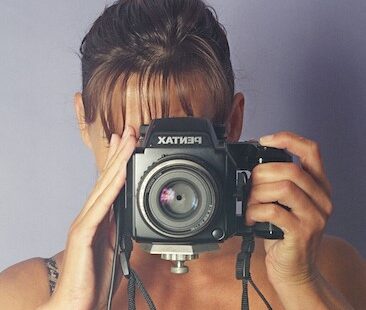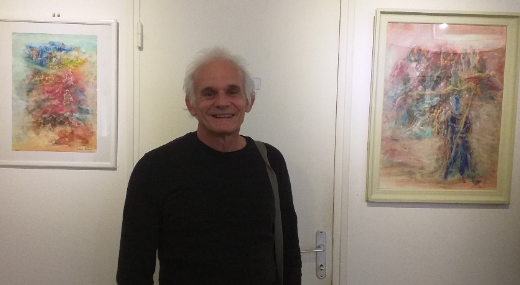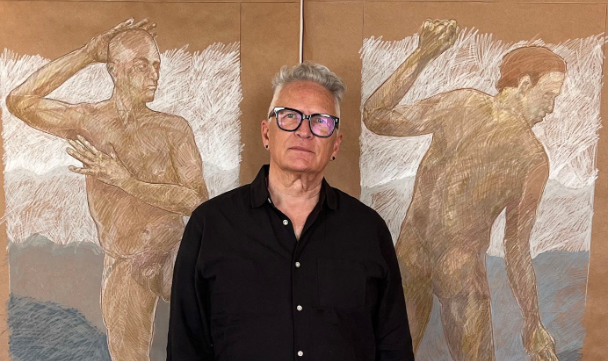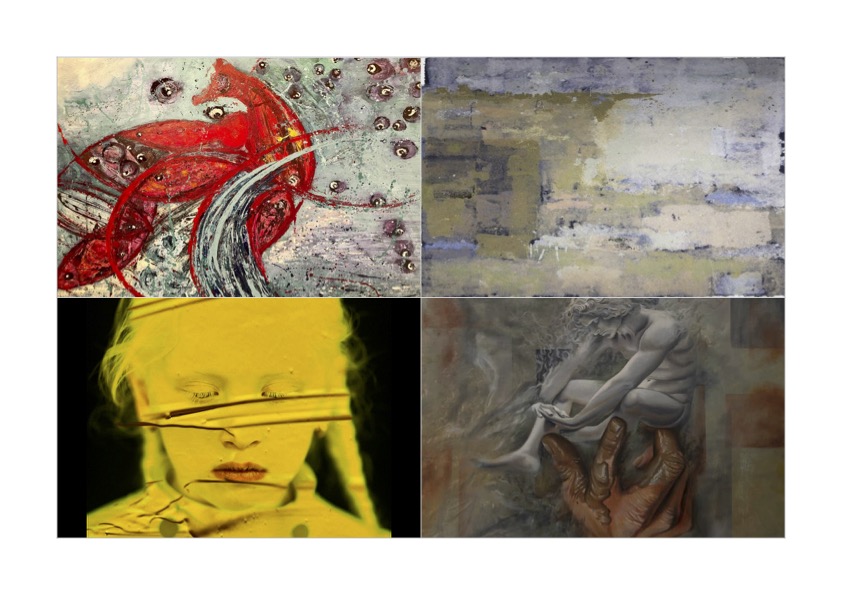
Sepideh Naziri, Nasrin Najafi, Mohsen Rezaei and Sara Azmodeh
by/di Pamela Goldman (traduzione in italiano al fondo pagina)
Sometimes we have a rare opportunity to pull back the curtain on this ‘stage of life’ and get a glimpse into the mysterious, the unknown. In doing this, we can discover the truth by examining, listening and investigating what is actually transpiring in the hearts and minds of those we engage.
This exploration into the creativity and personal thoughts of 4 Iranian artists is just that. We want this show to be a window between Iran and the Western world. What we have profoundly discovered is that civility, humanity and concern for the world at large live on both sides of the window. There was grace and a meditative calm throughout the entire assembling of this show. Mostly, we feel that by sharing the creative thinking of these 4 gifted artists, we could demystify any built-up fear which may be held in preconceptions about what the Iranian people feel and mean to us in the world at this time.
Sepideh Naziri
“Today when the human’s lifestyle has a deep connection with social networks, we are witnessing another type of lifestyle, a borderless life at highspeed.”
What is your greatest fear about the current state of the world?
S. N.: «My answer is losing time. This is my fear that we will spend less time for the ones we love and the expression of feelings: touching, eye contact and kissing will gradually be removed from life.»
What do you want the viewers to understand about your art?
S. N.: «Same as life, that despite all the crowding and the many details and movements, I hope they reach a final harmony and peace in the paintings.»
About your Iranian heritage, can you share something?
S. N.: «In our Iranian belief, we are all one of broken mirror. Iranians pay attention to spirituality and often follow their inner voice. Music, dance and poetry are their favorite past times.»
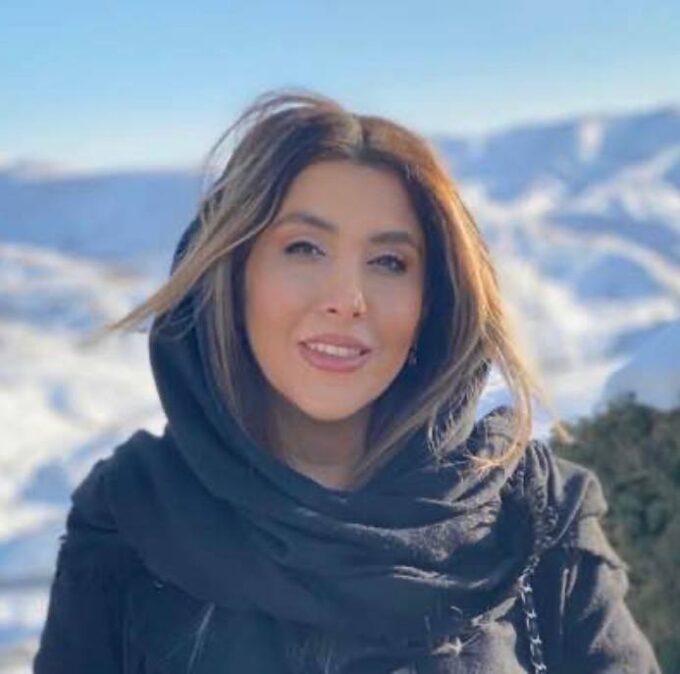
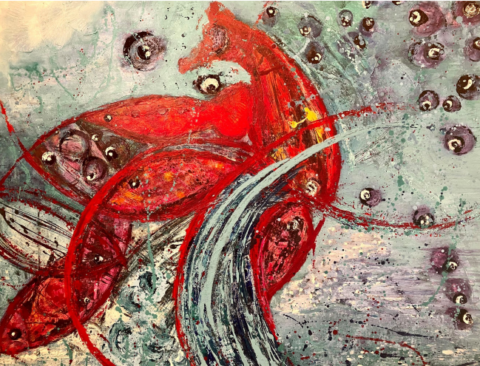
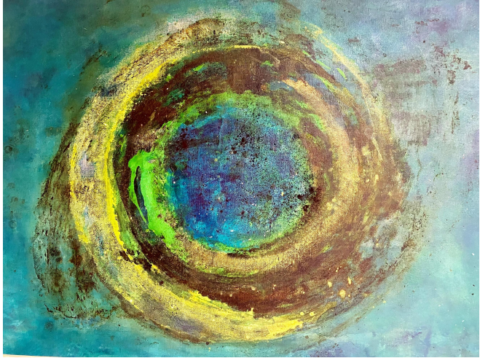
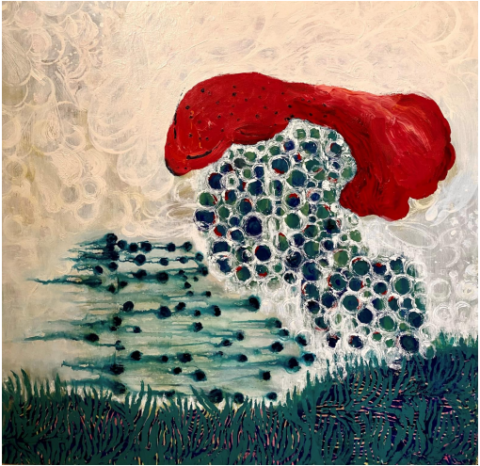
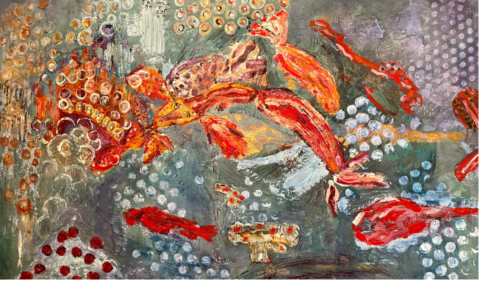
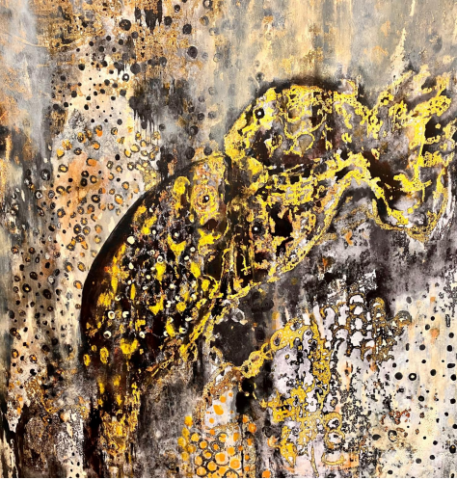
Nasrin Najafi
“When I observe my environment, I face a lot of residue. Pieces of paper, cardboard, clothes I once wore and foodstuff that were a part of my daily life. The material cost much to make, and the expense is taken from mother nature. Recycling is the best choice, yet I treat this residue differently. I make them into a tool for painting. My art is a tribute to nature.”
What is your greatest fear about the current state of the world?
N. N.: «My biggest fear are the wars that happen every day in the world and have involved many people particularly in the Middle East and world peace is one of my dreams.»
What do you want the viewer to understand about your art?
N. N.: «We should pay more attention to the environment because the continuation of life depends on protecting the environment, produce less waste and world harder to have clean air and land.»
About your Iranian heritage can you tell us something?
N. N.: «There is rich literature, ancient monuments registered with UNESCO, yet unfortunately some of the history is being destroyed of our ancestors. Nourooz and Yalda’s night are intangible effects that can be mentioned.»
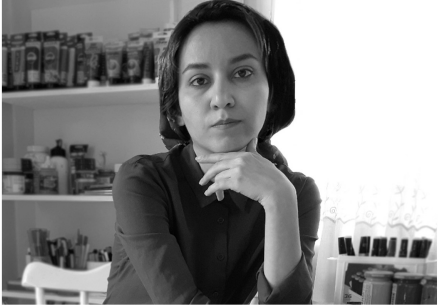
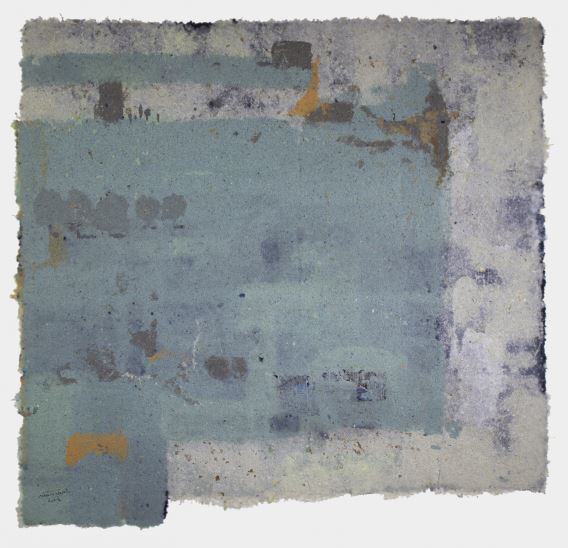
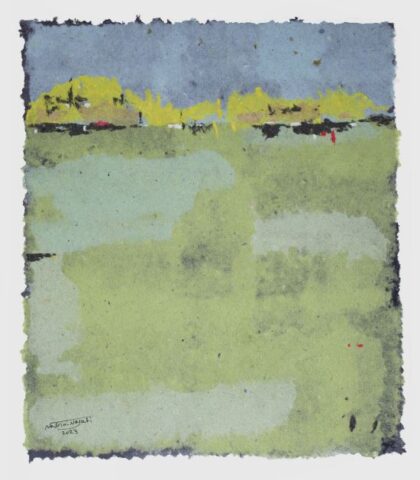
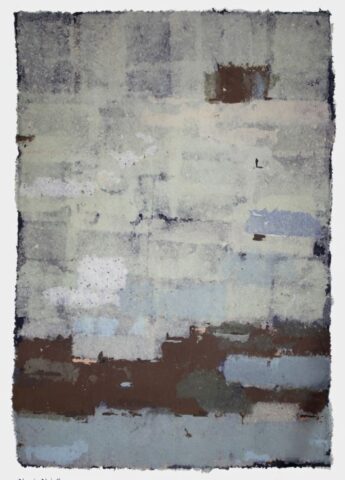
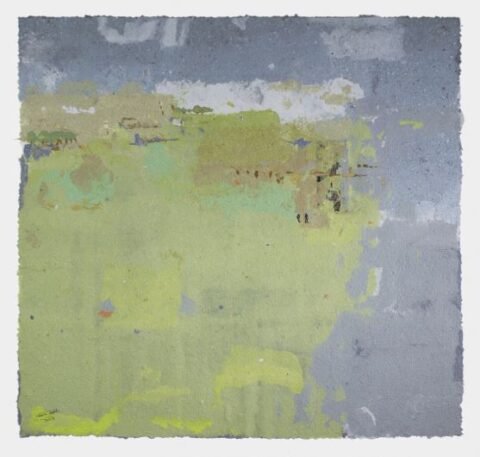
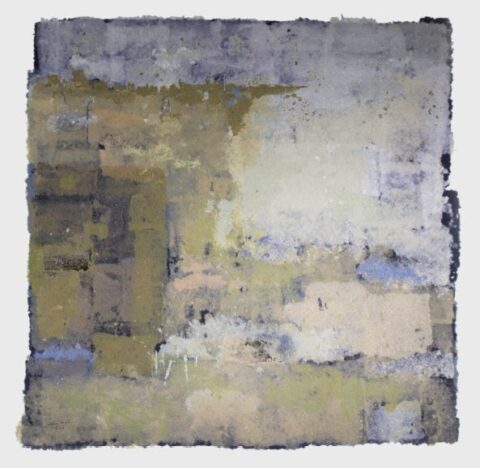
Mohsen Rezaei
“I always say that a painter is someone that is a painter and on the other hand, a designer is someone who implements his thinking and mental conflict. I always tell my students that you have to sit down and think well in order to draw well… I believe that if a painter does not have the roots of his work in mind, he will give up painting very easily. I believe that painting is a limitless beach that anyone can use according to his abilities. One goes in the middle of the water, another plays at the edge of the water.”
What is your greatest fear about the current state of the world?
M. R.: «The advancement of technology and artificial intelligence has always been both pleasant and scary for me; pleasant means progress and improvement. Fear that artificial intelligence will mold us, which means that they decide for us and determine the next path.»
What do you want the viewer to understand about your art?
M. R.: «In my art, the collection of close-up works, the audience is confronted with works that can be seen using a variety of formal methods, especially the pointillism technique and the mixed media of materials, from a visual, momentary, impromptu event.»
Regarding your Iranian heritage, what would you like to share?
M. R.: «A civilization that is 2500 years old and has left us the art of learning, the value of which can’t be described. In general, Iranian art and civilization do not belong to us alone and anyone from anywhere in the world can be influenced by it and enjoy it.»
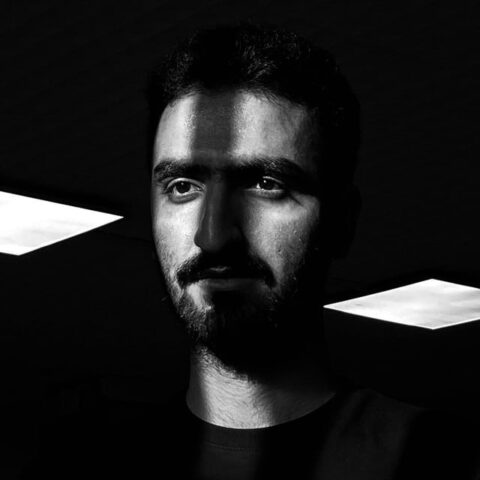
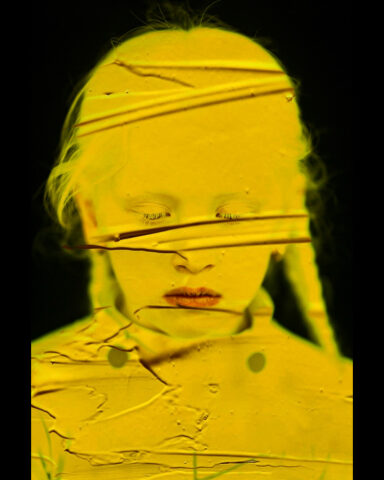
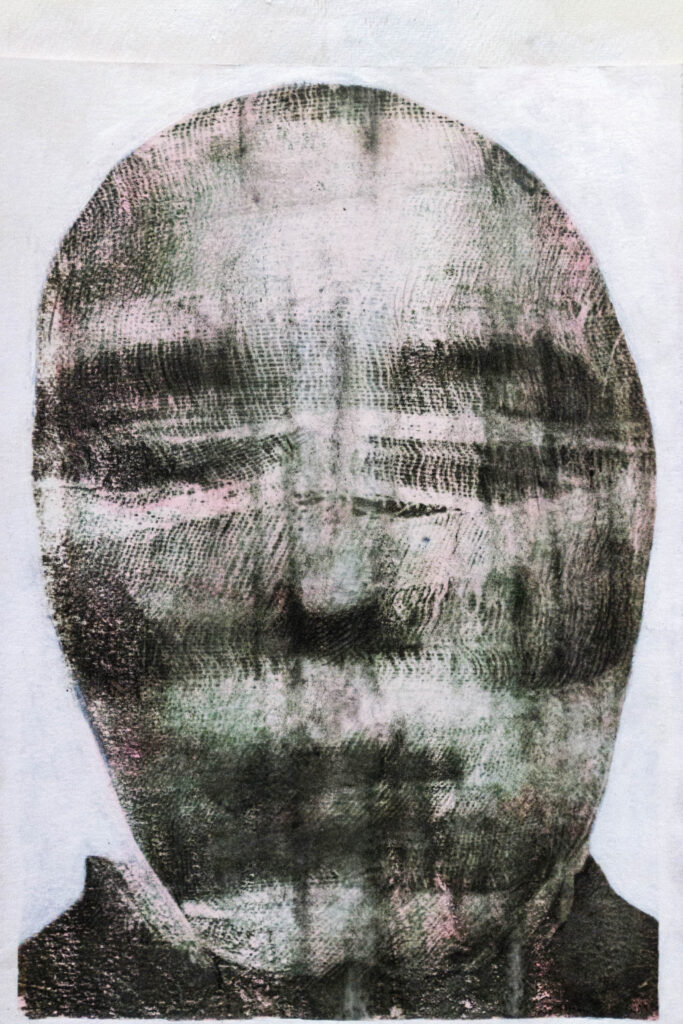
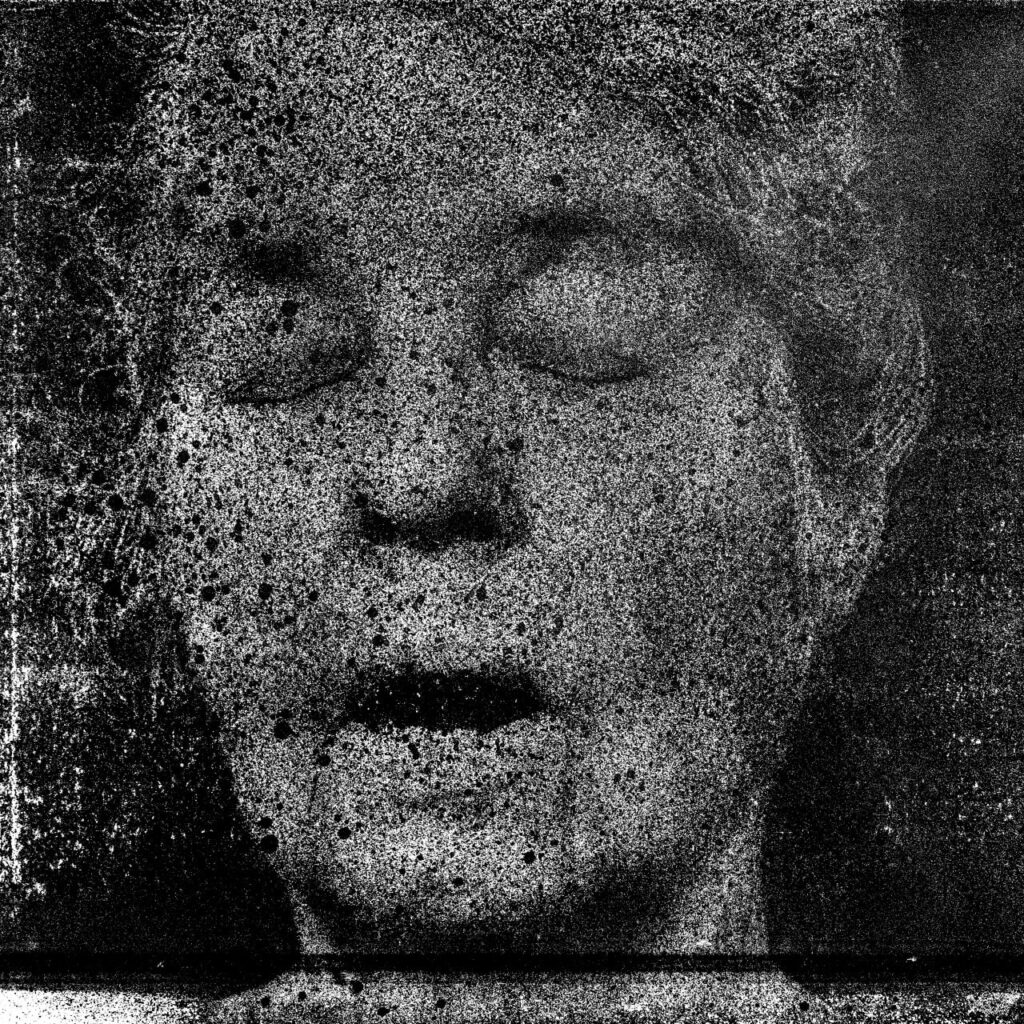
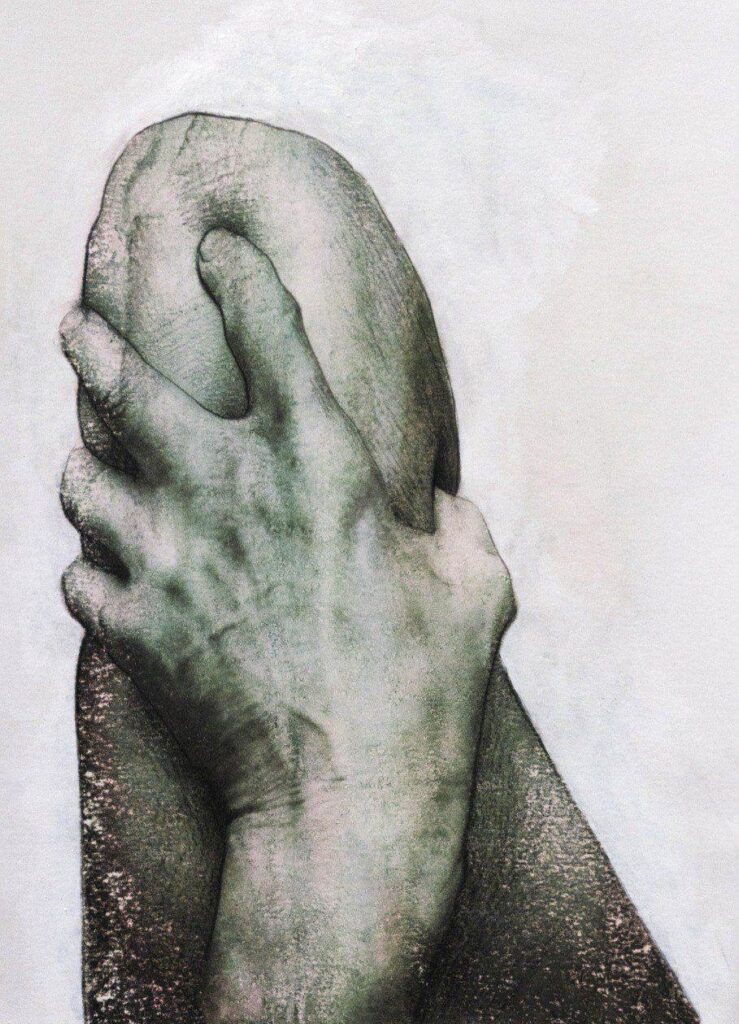
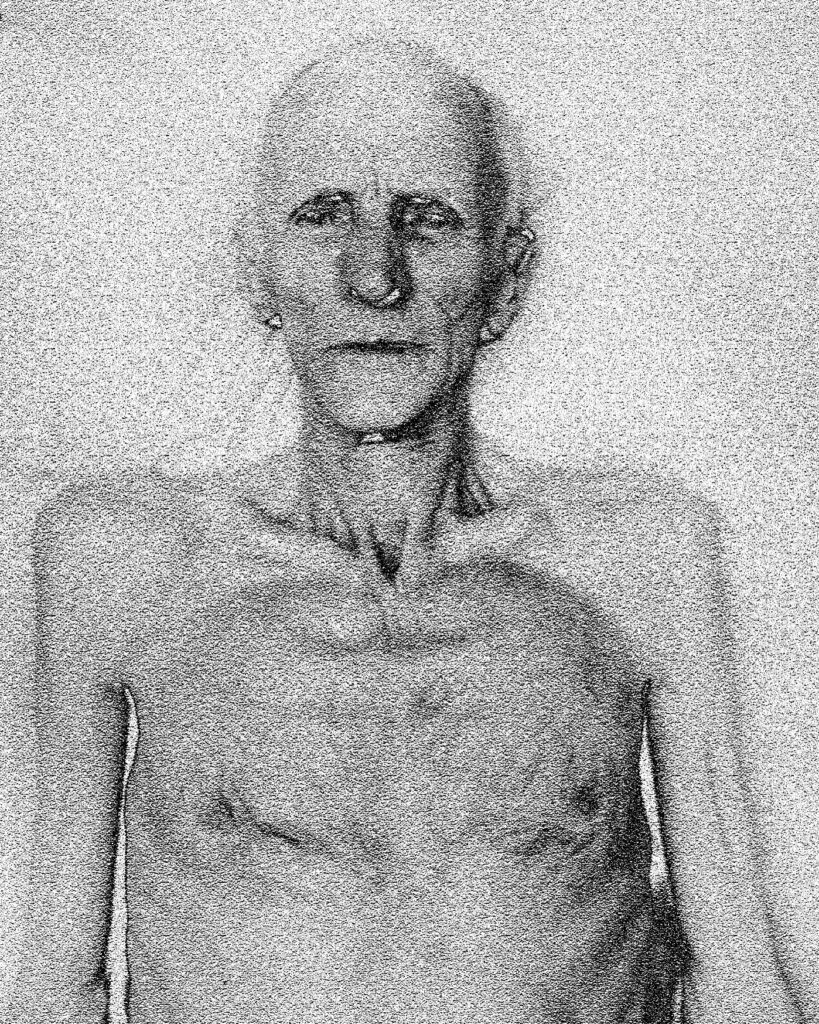
Sara Azmodeh
“Humans are afflicted with repetitive existences, enduring this suffering every day, twisting and carrying it on their shoulders, concealing their frustrations. We humans, like immature children, live in a colorful and light-filled fantasy world, immersed in the taste and scent of our nostalgia, where we can endure our solitude. In this era, we begin a distorted silence and reach the night at the end of our explorations.”
What is your greatest fear about the current state of the world?
S. A.: «My greatest concern is about the loss of humanity and the wars that follow due to human greed that leads to the destruction of life, and also about global warming and climate change that result in water scarcity and the destruction of nature. And these problems will not be solved until man returns to himself and his values.»
What do you want the viewer to understand about your art?
S. A.: «I want to encourage viewers to think and contemplate about these artworks beyond just admiring their beauty, to think about the meaning of these works based on their own worldview. Their interpretations will definitely be different from each other because each person’s world and thinking are different, and each individual’s experience of existence, God, and the world is unique to themselves.»
Regarding your Iranian heritage, what would you like to share?
S. A.: «Iranian heritage is very rich and diverse. This includes traditional Iranian arts. Additionally, the beautiful architecture of Iran, such as mosques and historical buildings, can also be highlighted. The enchanting beauty of Iranian arts can showcase the cultural values of Iran. And of course, the celebration of the Persian New Year, known as Nowruz, which is held at the best time and marks the beginning of spring. Nowruz is a significant cultural event in Iran and among Persian-speaking communities around the world. It symbolizes renewal, hope, and the triumph of light over darkness. During Nowruz, various rituals and traditions are observed, such as Haft-Seen table decoration, visiting family and friends, and giving gifts. The vibrant and festive atmosphere of Nowruz can also be shared with the Western world to promote cultural exchange and understanding.»
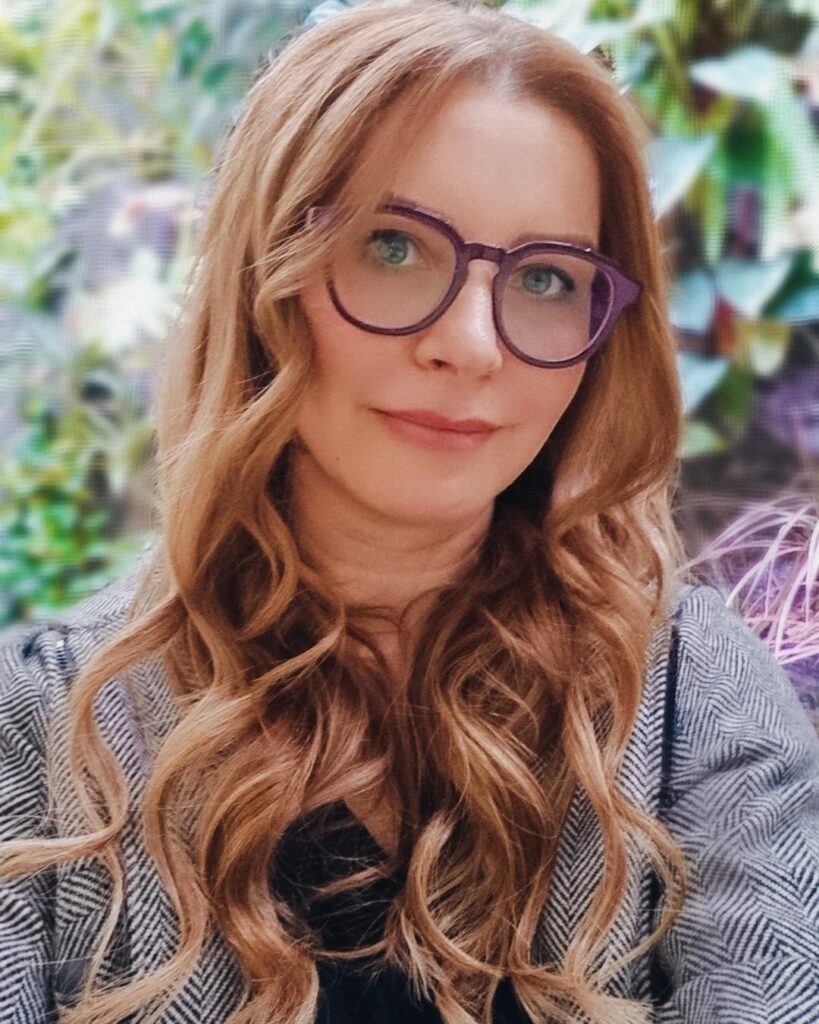
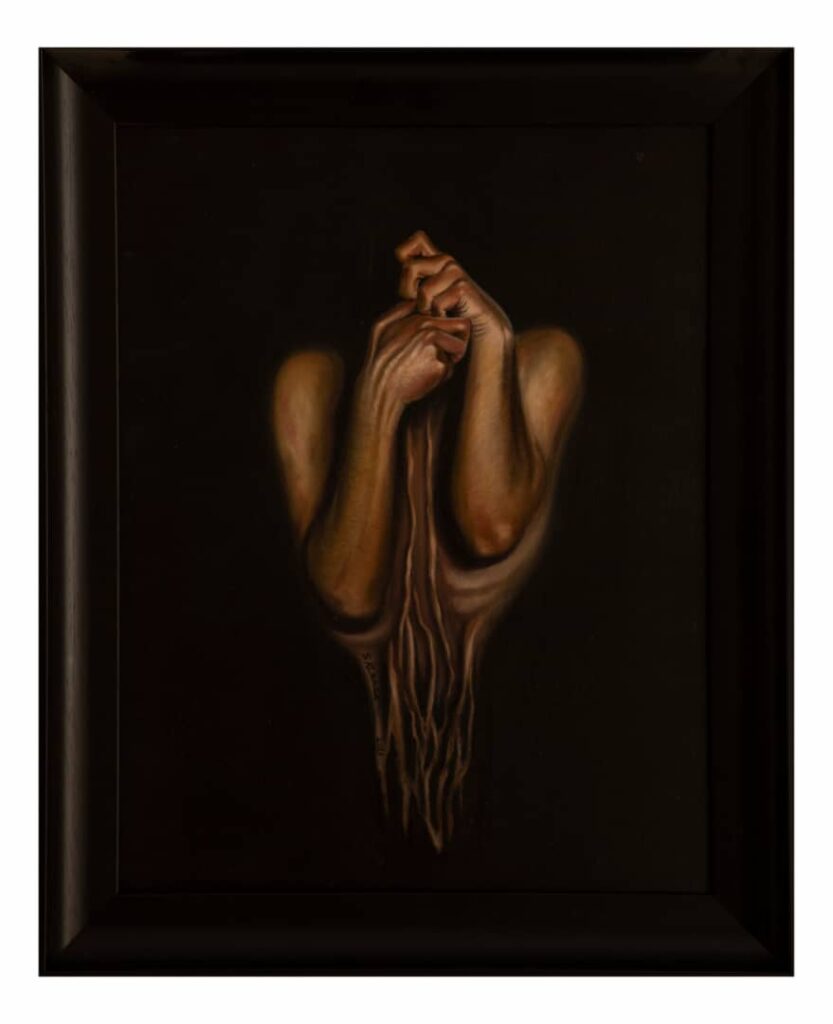
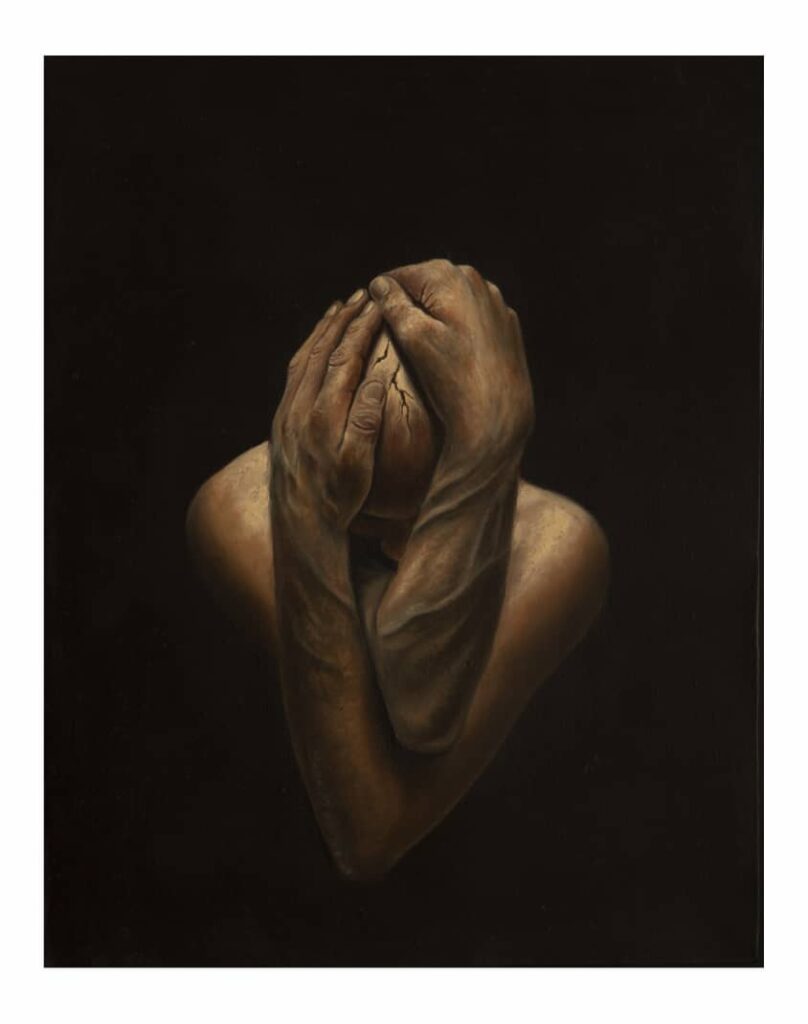
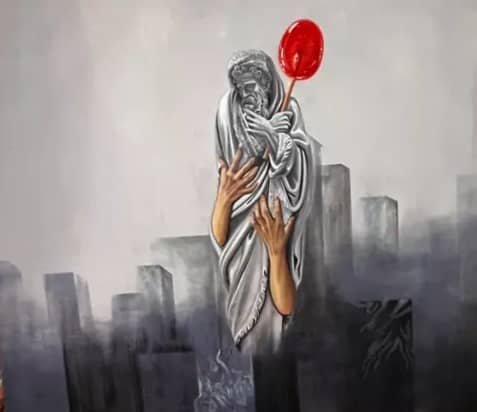
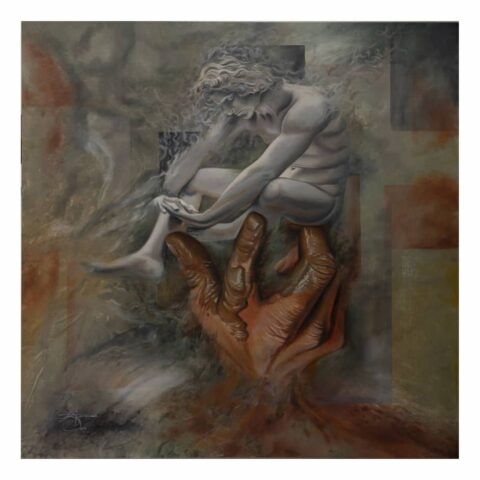
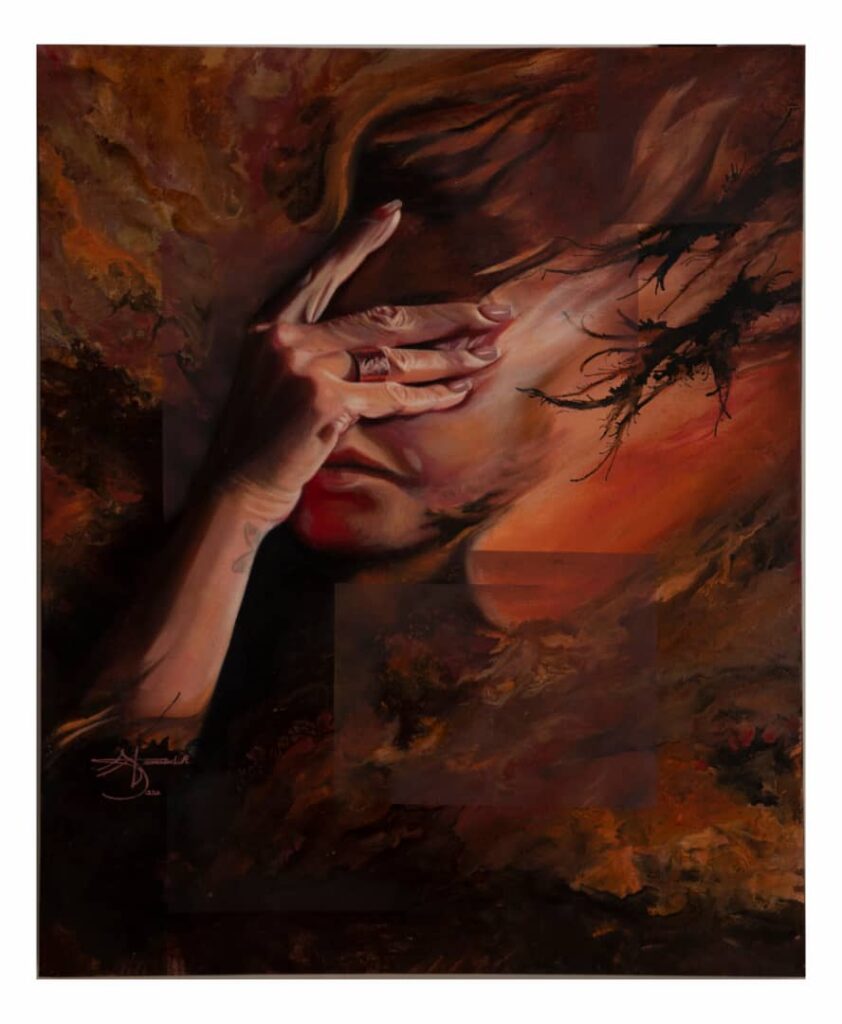
This exhibit was compiled by Pamela Goldman, Curator and Founder of Museum Mile Contemporary, a non-profit institution.
Much thanks to the selected artists of Iran and to our outstanding guest curator, Shahriyar Mirnia (Teheran, Iran). He states: “The exhibition you are viewing, introduces the contemporary art and artists of Iran to the world. We Iranians and Iranian artists will always move and continue on the path of peace.”
To send a message to the artists or the administration click the link:
https://www.museummilecontemporary.org/
*°*°*
Traduzione in italiano
di Simona Maria Frigerio
Qualche volta abbiamo la rara opportunità di alzare il sipario sul ‘palco della vita’ e dare un’occhiata al misterioso, all’ignoto. Nel farlo, possiamo scoprire la verità esaminando, ascoltando e investigando ciò che effettivamente trapela dai cuori e dalle menti di coloro coi quali dialoghiamo.
A tale scopo è teso questo approfondimento della creatività e delle considerazioni personali di quattro artisti iraniani. Intendiamo la nostra mostra virtuale come una finestra che si apra mettendo in comunicazione l’Iran e l’Occidente. Ciò che abbiamo scoperto è che civiltà, umanità e preoccupazione per il mondo appartengono alle persone che abitano da entrambi i lati della finestra. Nell’intera mostra si respirano grazia e una calma meditativa. E soprattutto, sentiamo che condividendo il pensiero creativo di questi quattro talentuosi artisti, possiamo demistificare qualsiasi timore preconcetto circa il popolo iraniano e i suoi sentimenti e intenzioni in questo particolare momento storico.
Sepideh Naziri
“Oggigiorno, in cui lo stile di vita è connesso profondamente con i social network, siamo testimoni di un altro modo di vivere, di un’esistenza senza limiti e ad alta velocità”.
Qual è il suo maggior timore riguardo a ciò che sta accadendo nel mondo?
S. N.: «Perdere tempo. La mia paura è di avere meno tempo per le persone che amiamo e per esprimere i nostri sentimenti: il toccarsi, il contatto visuale, i baci sono gradualmente rimossi dalla nostra esistenza».
Cosa vorrebbe che gli spettatori comprendessero vedendo la sua arte?
S. N.: «La vita. Ossia che, nonostante la folla, i troppi dettagli e il continuo movimento, raggiungessero uno stato di armonia e pace come nei miei dipinti».
Può farci partecipi di qualcosa che appartiene all’eredità iraniana?
S. N.: «Nel pensiero iraniano, siamo tutti frammenti di uno specchio rotto. Gli iraniani pongono grande attenzione alla spiritualità e spesso seguono la loro voce interiore. Non a caso, i loro passatempi preferiti sono la musica, la danza e la poesia».
Nasrin Najafi
“Quando mi guardo intorno, vedo molti rifiuti. Pezzi di carta, cartone, abiti che una volta indossavo e avanzi di cibo che erano parte della mia esistenza quotidiana. Produrre costa molto, e i fondi sono attinti da madre natura. Riciclare è la scelta migliore, e nonostante ciò io tratto questi rifiuti in maniera differente. Li trasformo in mezzi per dipingere. La mia arte è un tributo alla natura”.
Qual è il suo maggior timore riguardo a ciò che sta accadendo nel mondo?
N. N.: «La mia paura più grande sono le guerre che scoppiano tutti i giorni ovunque nel mondo e coinvolgono molte persone, particolarmente nel Medio Oriente. Tra i miei sogni c’è la pace nel mondo».
Cosa vorrebbe che gli spettatori comprendessero vedendo la sua arte?
N. N.: «Dovremmo stare più attenti all’ambiente perché la continuazione della vita sulla Terra dipende dalla protezione dello stesso: produrre meno rifiuti dato che è sempre più difficile avere aria e terreni puliti».
Può farci partecipi di qualcosa che appartiene all’eredità iraniana?
N. N.: «Possediamo una ricca letteratura, monumenti antichi protetti dall’UNESCO. Sfortunatamente è stata parzialmente distrutta la storia delle nostre origini. Come esempi potrei citare Nowruz (1) e la Notte di Yalda (2)».
Mohsen Rezaei
“Ripeto sempre che un pittore è un pittore e, dall’altro lato, un designer è qualcuno che attua il suo pensiero e il suo conflitto mentale. Ai miei studenti dico di sedersi e pensare bene così da disegnare bene… Credo che se un pittore non ha le radici del proprio lavoro in mente, lascerà facilmente il mestiere. Credo che la pittura sia una spiaggia senza limiti a cui ciascuno può accedere a seconda delle proprie capacità. Alcuni si spingono fino in mezzo all’acqua, altri rimangono sulla riva”.
Qual è il suo maggior timore riguardo a ciò che sta accadendo nel mondo?
M. R.: «I passi in avanti nel settore tecnologico e dell’intelligenza artificiale sono sempre stati, per me, sia positivi sia temibili; possitivi in quanto significano progresso e miglioramenti. Ma anche temibili se la IA farà da matrice, con la quale decidere per noi e determinare il nostro percorso».
Cosa vorrebbe che gli spettatori comprendessero vedendo la sua arte?
M. R.: «Nella mia arte, nelle collezioni di dettagli, l’audience si confronta con lavori che possono essere visti attraverso una serie di metodi formali, dal puntinismo (specialmente) al mixed media, dal visuale all’evento istantaneo, fino all’improvvisazione».
Può farci partecipi di qualcosa che appartiene all’eredità iraniana?
M. R.: «Una civiltà che data 2.500 anni e ci ha lasciato l’arte di imparare, il cui valore non può essere descritto. In generale, l’arte iraniana e la civiltà non appartengono solo a noi e chiunque nel mondo può esserne influenzato e apprezzarla».
Sara Azmodeh
“Gli esseri umani soffrono a causa di esistenze ripetitive, sopportando tale sofferenza ogni giorno, contorcendosi e portandone il peso sulle proprie spalle, nascondendo le proprie frustrazioni. Noi umani, come bambini immaturi, viviamo in un mondo di fantasia colorato e pieno di luce, immersi nel gusto e nell’aroma della nostra nostalgia, dove possiamo sopportare la nostra solitudine. In quest’era, iniziamo con un distorto silenzio e raggiungiamo la notte alla fine delle nostre esplorazioni”.
Qual è il suo maggior timore riguardo a ciò che sta accadendo nel mondo?
S. A.: «La mia maggiore preoccupazione riguarda la perdita di umanità e le guerre dovute all’avidità che conduce alla distruzione della vita, e anche il riscaldamento globale e il cambiamento climatico che conducono alla scarsità di acqua e alla distruzione della natura. Questi problemi non saranno risolti finché gli esseri umani non torneranno a loro stessi e ai propri valori».
Cosa vorrebbe che gli spettatori comprendessero vedendo la sua arte?
S. A.: «Vorrei incoraggiare i miei spettatori a pensare e a contemplare questi lavori aldilà dell’ammirazione per la loro bellezza, a concentrarsi sul significato degli stessi in base alla loro visione del mondo. Le loro interpretazioni saranno decisamente differenti le une dalle altre perché il mondo di ciascuno di noi e il nostro modo di pensare sono differenti, così come l’esperienza individuale dell’esistenza, di Dio, e del mondo».
Può farci partecipi di qualcosa che appartiene all’eredità iraniana?
S. A.: «L’eredità iraniana è molto ricca e diversificata. Vi sono incluse le arti tradizionali iraniane. Inoltre, la bellezza dell’architettura del nostro Paese – come ad esempio le moschee e gli edifici storici, che dovrebbero essere evidenziati. La bellezza incantevole delle arti iraniane mostra i valori culturali della Nazione. E naturalmente, la celebrazione per il Nuovo anno persiano, noto come Nowruz (1), che si tiene nel miglior periodo possibile e demarca l’inizio della primavera. Nowruz è un evento culturalmente significativo in Iran e tra le comunità che parlano persiano in tutto il mondo. Simboleggia la rinascita, la speranza, e il trionfo della luce sul buio. Durante Nowruz, si osservano vari rituali e tradizioni, come la decorazione della tavola, denominata Haft-Seen (3), le visite a familiari e amici, e i doni. L’atmosfera vibrante e festiva di Nowruz può essere condivisa anche con l’Occidente per promuovere lo scambio culturale e la comprensione».
Mostra virtuale a cura di Pamela Goldman, Curatore e Fondatore del Museum Mile Contemporary, istituzione no-profit.
Porgiamo i più sentiti ringraziamenti agli artisti iraniani selezionati e al nostro eccezionale guest curator, Shahriyar Mirnia (da Teheran, Iran), il quale dichiara che: “La mostra che state vedendo introduce all’arte contemporanea e agli artisti iraniani nel mondo. Noi iraniani e i nostri artisti percorriamo e continueremo a percorrere il sentiero della pace”.
Per inviare un messaggio agli artisti o all’amministratore del sito, cliccare: https://www.museummilecontemporary.org/
(1) Nowruz è una ricorrenza tradizionale che celebra il nuovo anno
(2) Yalda o Notte Chelleh è una festività del solstizio d’inverno iraniano
(3) Durante l’Haft-Seen, sulla tavola ci devono essere sette elementi che iniziano con la lettera S in Persiano
Friday, March 29, 2024 / venerdì, 29 marzo 2024
On the cover: a collage with the artists’ paintings; in the article: all images, courtesy by the artists (all rights reserved. Reproduction prohibited) / In copertina: un collage di opere degli artisti selezionati; nell’articolo: tutte le immagini, courtesy gli artisti (tutti i diritti riservati. Vietata la riproduzione)





